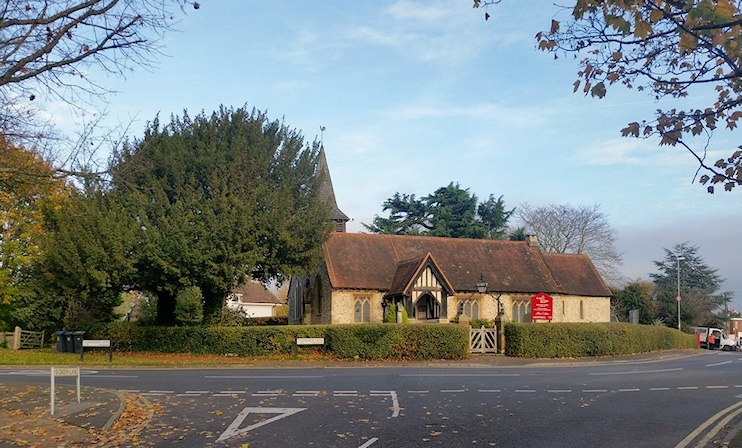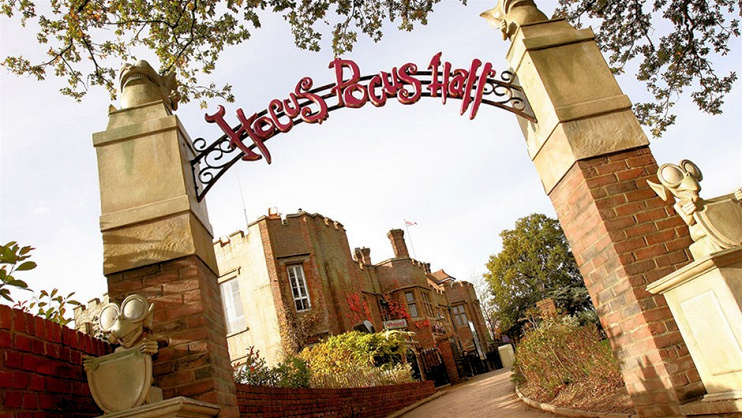Chessington
Chessington, Kingston
Nowadays best-known as the home of London’s only theme park, Chessington is a heavily developed mid-20th-century suburb occupying most of the tongue of the borough that protrudes south beyond Hook

Cisendone – ‘the hill of a man named Cissa’ – was mentioned in Domesday Book and St Mary’s church appears in Merton Priory records of 1174. Chessington Hall was built in the early 16th century and from the 1750s it was home to the playwright Samuel Crisp. The novelist Fanny Burney was a frequent guest at the hall and wrote part of her second novel, Cecilia, in the summerhouse during the early 1780s.
Chessington Hall was rebuilt in 1832. Shown in the photo above, St Mary’s church was restored and enlarged in 1854, incorporating elements from most of the preceding seven centuries. Chessington Court lay to the north, across a mile of open farmland.
Stimulated by the opening of the Kingston by-pass in 1927, private and municipal housing began to fill the fields – and soon replaced Chessington Court.
In 1931 Chessington Zoo was created in the 65-acre grounds of Burnt Stub, a 19th-century house built on the site of a predecessor that had been burnt down to a stub by Parliamentarians during the Civil War.
The zoo sent a baby elephant to attend the opening of Chessington South station in 1939. Later in the same year, George VI opened RAF Chessington as a barrage balloon centre for the defence of London. The base was used throughout the Second World War and was subsequently converted to military medical use.
After the war the council built more estates in the area, including 400 homes in the grounds of Chessington Hall in the 1950s. The hall itself survived a little longer but was demolished in 1965. Having spent its latter days as a US air force base, RAF Chessington was sold by the Ministry of Defence and housing was built on the site in the mid-1990s. On Garrison Lane, Chessington school has evolved out of Fleetwood school (via Chessington community college) and has been almost wholly rebuilt over the past few years.

The zoo has become Chessington World of Adventures – Greater London’s only full-scale theme park – and Burnt Stub became Hocus Pocus Hall. The resort’s owners put the hall on the market in September 2018 at an asking price of £7 million. However, it doesn’t appear to have sold because in January 2019 World of Adventures announced that the building would soon become home to ‘Room on the Broom — A Magical Journey’, “following the success of The Gruffalo River Ride Adventure.”
There are also two on-site hotels at the resort, one of which now has four Gruffalo themed rooms. Chessington World of Adventures is outer London’s most popular paid-for visitor attraction, drawing just over 1.5 million fun-seekers a year – slightly more than Kew Gardens.
The singer Petula Clark lived in Salmons Road as child, attended Lovelace Primary School and performed at street parties in Bolton Close and Hook’s Vallis Way to celebrate the end of the Second World War.
